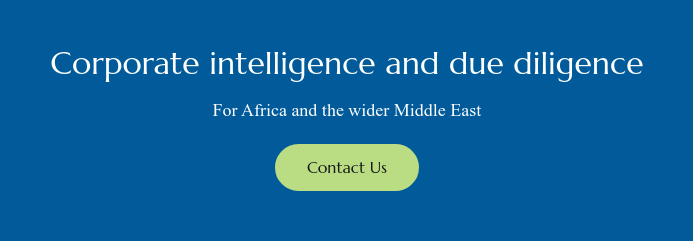Saudi Arabia pushes on with giga-projects supported by web of local contractors
Read moreInfrastructure boom is driving development in Saudi Arabia
Saudi Arabia has announced a trillion-dollar pipeline of infrastructure projects aimed at diversifying its economy beyond oil. At present, new infrastructure is being developed and expanded across the entire country. All of this is in support of the economy-wide national transformation plan, Vision 2030, which is now in its eighth year. The Vision includes various infrastructure initiatives including giga-project tourism destinations, expanding cities, building thousands of new homes, upgrading transport networks, generating clean energy and becoming an international logistics hub.
Giga and mega projects
The biggest infrastructure projects under development are the country’s giga and mega projects. There are currently around 20 projects under development throughout the country (depending on how you count them). The crown jewel of these is NEOM. It is currently one of the largest construction sites in the world with around 140,000 construction workers operating across NEOM’s sites as of April 2024. This number is expected to rise to 200,000 in 2025.1 In February 2024, NEOM announced it was undertaking the largest earthworks and piling operation in the world at the site of the 170km linear city it is building, The Line. A manmade lake and 36km of artificial ski slopes are also being developed at NEOM’s mountain tourism destination, Trojena, which will be hosting the Asian Winter Games in 2029. Other giga projects include: the Red Sea Project, Diriyah, Qiddiya, and ROSHN. Riyadh also has a series of projects under various stages of construction.
Expanding cities
Saudi cities are expanding and require ever greater infrastructure. A recent study by KAPSARC forecast a doubling in residential and commercial floor space across the country by 2060, owing to continued economic growth and population increase.2 Riyadh is aiming to double its population to 15-20 million people by 2030. It is also transforming itself into an international city as it prepares to host the 2030 World Expo and the 2034 World Cup. Hotels, stadiums and additional infrastructure will be needed to cater for the influx of visitors expected.
Transport network
Roads, railways, ports, and public transport systems are also being developed or receiving upgrades across the country. A series of massive airport expansions is in the works, which aims to position Saudi Arabia as a regional aviation hub, rivalling established centres like Dubai and Doha. A new national airline, Riyadh Air, was announced in 2023 to support these ambitions. It is set to start carrying passengers in 2025. In September 2023, the Red Sea Project’s new airport opened, marking another milestone in the country’s expanding tourism infrastructure. Overall, Saudi Arabia has set a target to handle 330 million passengers at its airports by 2030, up from around 100 million in 2019. Riyadh is expected to account for 120 million passengers by that year.
A new public bus network opened in Riyadh in 2023, marking a first for the city as it begins to embrace public transport and more sustainable mobility options. Riyadh’s long awaited metro is also complete but not yet open. In 2023, a new Public Investment Fund (PIF)-backed company, EVIQ, launched with a mandate to develop EV infrastructure across the country. There are also plans to expand the country’s rail network to over 8,000km of track, up from the current 5,000km.
Clean energy
While Saudi Arabia is set to remain in the oil exports business for as long as it can, it is serious about decarbonising its domestic economy. In 2021, the country set a national target for net zero emissions by 2060. To achieve that, it is rolling out all sorts of clean energy infrastructure. At the end of 2023 Saudi Arabia had 2.8GW of renewable energy capacity installed, with more than 8GW under development. This compares to having virtually no renewables in 2016. The country has a target for 50% of electricity demand to be met by renewables by 2030. It had been targeting 58.7GW of installed renewables capacity by 2030 but recently raised its ambitions to 130GW by that date.
The country’s first green hydrogen energy plant is under construction at NEOM and expected to come online in late 2026. Solar and wind farms to power this US$8.4 billion plant are currently under construction. Plans are also in the works to build nuclear power plants in the country, which will help to further diversify the domestic energy mix.
Trade and logistics hub
In the world of trade, Saudi Arabia is positioning itself as an international logistics hub between the three continents of Asia, Europe and Africa. It wants to leverage its strategic location, including along the Red Sea which captures 12% of global container trade. NEOM’s Oxagon port will aim to tap into this.
Saudi Arabia is also trying to develop a local manufacturing base in non-oil industries. One focus area is automotives, particularly electric vehicles (EV). The country’s sovereign wealth fund, the PIF, has been investing significantly in different parts of the EV value chain. In 2023, US luxury EV manufacturer Lucid opened a factory north of Jeddah, representing Saudi Arabia’s first car manufacturing facility. The country has also launched its own EV brand, Ceer Motors, which plans to start manufacturing in 2025. Hyundai has also partnered with the PIF to build a manufacturing plant in the Kingdom.
Challenges
Expanding national infrastructure on such a scale comes with challenges. These include regional economic integration, climate risks and the ability to fund projects. Saudi Arabia was part of a 2023 deal to establish a new trade corridor between Europe, the Middle East and India. This relies on connecting Saudi Arabia by rail to the Mediterranean port city of Haifa in Israel. While now off the cards in the short term due to the war in Gaza, integrating economically with Israel to form such trade and logistics corridors may continue to prove harder than it looks longer term.
Rising temperatures and more frequent extreme weather events will also bring greater physical stresses to the country’s expanding infrastructure. Global climate change has been causing temperatures in the Arabian Peninsula to rise 50% faster than other landmasses in the northern hemisphere, making the region particularly vulnerable.3 Climate change is also making extreme weather events more frequent and more intense. The April 2024 flooding in Dubai showed the impacts that extreme weather can have on a city’s ability to function. Saudi Arabia’s new giga and mega projects will need to take this new normal into account and work to future-proof their infrastructure from climate impacts.
The bill to pay for all the infrastructure supporting Vision 2030 is also vast. The country is betting on a continuous flow of income from its oil exports for the foreseeable future to cover this expense. It is also aiming to significantly increase inflows of foreign direct investment which is likely to be a steep challenge.
Overall, Saudi Arabia’s booming infrastructure sector promises to be one of the most interesting to watch over the coming years and an area of significant opportunity for international firms looking to enter the market.
Charles Phillips is an independent consultant specialising in sustainable development in Saudi Arabia. His areas of expertise include climate change and sustainability policy in the Arab Gulf States. He is also a specialist in Saudi Arabia’s giga projects and the country’s emerging tourism and heritage sectors. He has travelled and worked extensively across the Middle East and Africa and holds an MPhil in Modern Middle Eastern Studies from the University of Oxford. Follow him on LinkedIn.
Over the coming weeks, Charles will be sharing his in-depth analysis on Saudi Arabia with a series of blogs and white papers. In addition to the changing business environment, he will focus on Saudi Arabia’s giga-projects currently under development, its rapidly changing infrastructure and its emerging tourism industry.
FOOTNOTES
-
-
https://www.neom.com/en-us/newsroom/neom-hosts-global-contractor-forum-to-shape-future-projects
-
https://www.kapsarc.org/research/publications/achieving-net-zero-ghg-emissions-of-saudi-arabia-by-2060-the-transformation-of-the-building-sector/
- https://sustainability.kaust.edu.sa/wp-content/uploads/2023/10/KAUSTxAEONxKAPSARC_Climate_Futures_Report.pdf
-

